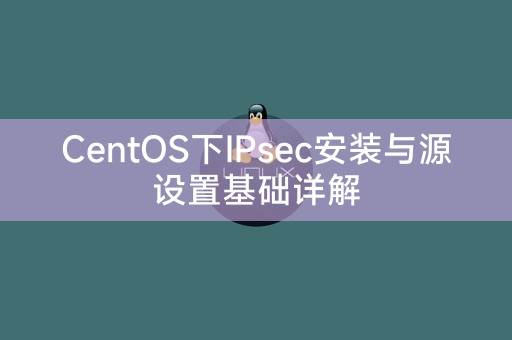
php editor Apple brings you a detailed article on the basics of IPsec installation and source settings under CentOS. In this article, we will provide an in-depth introduction to the installation steps of IPsec under CentOS system and the basic knowledge of source settings. By studying this article, you will learn how to install and configure IPsec in CentOS systems, and how to set up sources for better software updates and security. Whether you are a novice or an experienced user, this article will provide you with clear and easy-to-understand guidance to help you successfully complete the installation and configuration of IPsec.

1. Update system: Use the following command to update your CentOS system:
```shell
sudo yum update
```
2. Install IPsec tools: In CentOS, you can use the following command to install racoon and ipsec-tools:
sudo yum install racoon ipsec-tools
3. Configure IPsec: Edit the /etc/racoon/racoon.conf file and configure it according to your network environment and needs.
1. Understand the source: The source is the place used to obtain software packages and software updates in the CentOS system. By default, CentOS uses the official software source.
2. View the current source: Use the following command to view the sources configured in the current system:
yum repolist
3. Add a new source: You can edit /etc .repo file in the /yum.repos.d/ directory to add a new source. In this file, you need to specify the name, description, baseurl or mirrorlist of the source and other information.
4. Disable or enable the source: You can use the following command to disable or enable the specified source:
sudo yum-config-manager --disable
sudo yum-config -manager --enable
In the Linux system, there is a very useful command called "grep", which can search for a specified pattern from a text file or standard input. lines, and output the matching lines to standard output. This command is very helpful for quickly finding and filtering text data. If you want to find lines containing the word "example" in a file, you can use the following command:
grep "example" filename.txt
The above is the detailed content of Detailed explanation of the basics of IPsec installation and source settings under CentOS. For more information, please follow other related articles on the PHP Chinese website!




